Put simply and taking the original definition of the concept, functional foods are dietary items that no longer merely satiate, but which also provide an additional benefit to health or wellbeing beyond their nutritional value.
Originally, functional foods were the subject of very scientific or medical discourse, had rather complex recipes, and primarily focused on physical health. Functionality often took precedence over eating pleasure, with ingredients, recipes and food forms that mainly addressed health benefits.
Functional foods are now undergoing a major transformation. They are gradually becoming more accessible, gaining in popularity and appealing to more and more consumers who want to take back control of their food and their health. Above all, functional foods are changing, and we are seeing new shifts. We have identified 4 main developments:
#1 GREATER CUSTOMIZATION
63% of consumers expect the personalization of a service or product to be standard (Yougov and Adove, 2020). With consumers wanting to be treated by brands as unique individuals, brands are adapting functional foods to reflect this demand, increasingly personalizing their products to suit individual tastes.
Some brands have therefore chosen to ultra-segment their offering to meet specific needs. We see this, for example, with Miraculous, a range of gummies that cater for a wide variety of health & beauty needs, including to boost energy, reduce anxiety, calm digestive problems, supplement a vegetarian diet or make a tan last longer.
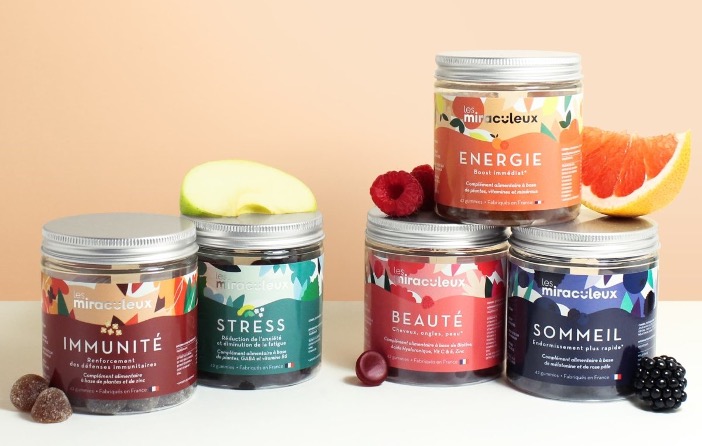
Other brands have chosen to address specific target groups: for example, Healthy Mama, whose offering is designed to support pregnant women by covering all their needs at each stage of pregnancy; or numerous tea brands that specifically target menopausal women, offering herbal teas that maintain hormonal harmony and balance.
In some cases, consumers can also adapt the products themselves as required.
For example, with NesQuino, a drinks machine launched by Nestlé in China, users can choose their base shake from three possibilities (smoothie, milkshake or oat shake) and then add one of seven recipes containing superfoods offering a range of functional benefits: vitality, concentration, digestive health or detox.
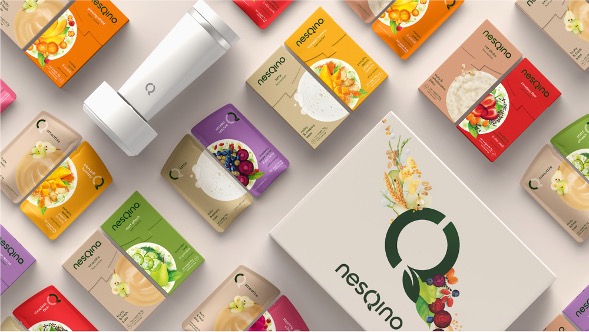
Lastly, the epitome of customization: individually tailored solutions! Rootine, for example, is exploring nutrigenetics to be able to offer highly personalized vitamin regimens, based on an amalgamation of data including DNA, blood type studies, and lifestyle data: age, weight, diet, sports activities, family life, etc.
#2 MORE NATURALNESS
Consumers are increasingly wary of highly processed and industrialized foods, and are therefore turning to ‘reassuring’ dietary products that claim to be more natural. (84% of people in French would choose the product with the highest number of natural ingredients, according to Kantar, 2020). Functional food is equally subject to this trend towards greater naturalness and simplicity.
We’re now seeing new offerings on the market that experiment with new super ingredients. This is the case with the range of functional drinks launched by PSG: ‘Le Dribble’ contains coconut water, baobab and curcumin; ‘Le Pitch’ is made of chlorophyll, cucumber water, agave and chlorella algae. Moreover, adaptogenic mushrooms (e.g., reishi, shitake and chaga), known for their energizing and toning virtues, are increasingly being found in functional beverages. The brand SoMuch Organic even puts them in coffee!
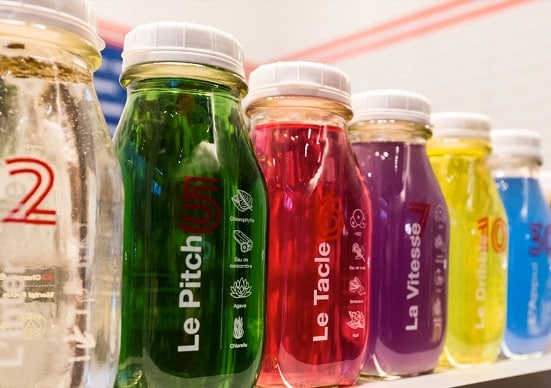
Other functional food offerings capitalize on naturally beneficial processes, such as cold pressing, or fermentation (For example, Danone’s – Dannon in the US – Activia no longer uses the terminology ‘active Bifidus’, but rather ‘yoghurt ferments’, i.e., probiotics!)
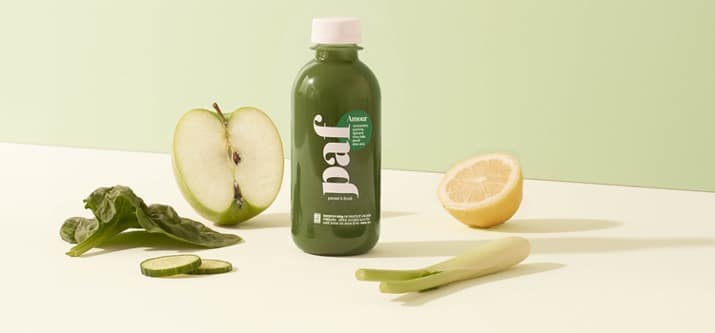
Other brands have chosen to repackage classic products: the Icelandic cultured dairy product, skyr, is now being marketed by food giants such as Danone, Les 2 Vaches and Siggi’s; the brand BRU now offers a range of bone broths depending on the desired benefit; Kvass, a fermented drink made from rye bread, is soon to be the next trendy drink like Kombucha.

Finally, there are functional product offerings that draw their inspiration from traditional medicines. The brand of plant-based desserts, YA, has recently launched a new product whose composition is inspired by the principles of Ayurvedic nutrition, a type of traditional Indian medicine. The brand Maison Louno, inspired by Chinese medicine rituals, now enriches its food supplements with functional mushrooms, superfoods and super-herbs.
#3 MORE HOLISTIC
While physical health had long been the central focus, a much more holistic approach is now being taken to the issue of wellbeing. One aspect is particularly gaining the limelight, i.e., mental health. This is not really surprising when you consider that 1 in 4 Europeans will be affected by mental disorders at some time in their lives, according to the WHO (2021). To meet these new expectations, functional foods are evolving.
We are now seeing a category of functional products that’s designed especially to be of benefit to the consumer’s state of mind or mood. This is the case with Recess’ drinks and powders, which claim to calm the mind and improve mood, or the drink Confidence, which combines six functional ingredients to… boost self-confidence! In a different yet related vein, ‘The Cure’ is a Parisian ‘mood restaurant’ that designs menus taking into account the moods of its clientele, with a view to proposing dishes that respond to their clients’ state of mind at a given moment.
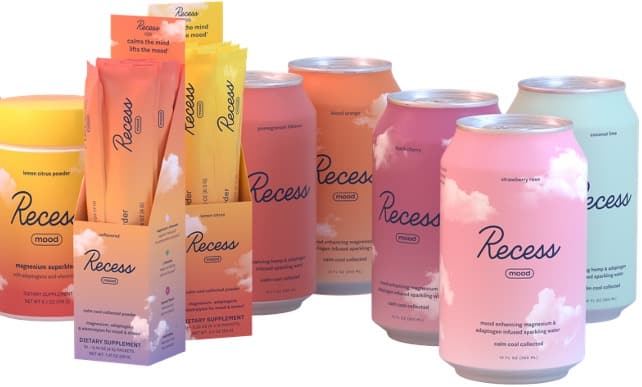
We also find functional foods designed to help combat stress and/or improve sleep. The drink ‘Moment’ has been developed to offer everyone the benefits of meditation… without the effort! PepsiCo recently launched ‘Driftwell’, an anti-stress and sleep-inducing drink.

Moreover, in the broader sense of wellbeing, we can also include physical appearance. So-called beauty foods are the fusion of food and beauty! In this category, we find ‘Cube Me’, a brand created by the Japanese beauty giant Amorepacific, who market chewable skin care supplements (e.g., for extra youthfulness and radiance) which resemble square-shaped candies.
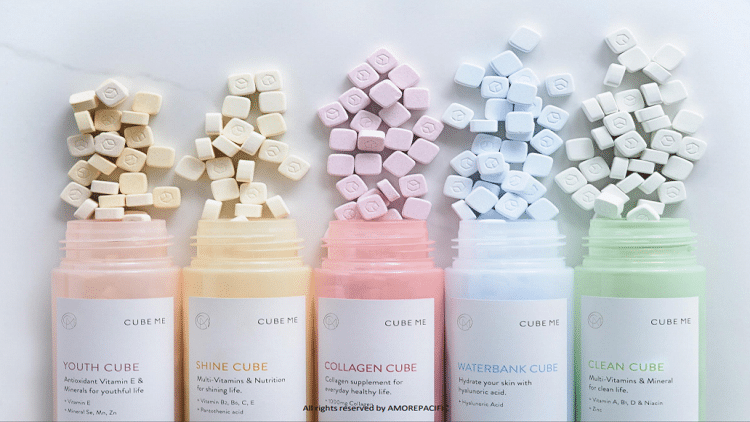
#4 MORE FUN
After an era of wellness food that was sometimes considered austere and mechanical, today’s consumers are looking to reconnect with the notion of pleasure, and functional food is no exception.
In product marketing terms, this has resulted in a focus on pleasure and indulgence. This is what Innocent is doing with its range of functional drinks ‘Plus’, which underscore a sense of pleasure, evoked by graphic codes full of pep, as well as playful and emotional text. The latest Activia campaign is also interesting: Danone have now chosen to place the emphasis on both the high probiotic value and rich taste of their products, as well as the importance of taking the time to savor good food.
The trend towards more fun is also evidenced by new, more practical or fun formats. Biosens, Léa Nature’s brand of organic food supplements, offer an original range that combines the benefits of honey with those of natural active ingredients. Spēka, a snack with cottage cheese in the center and a chocolate or caramel coating, is designed to promote healthier snacking… or increase the appeal of cottage cheese!
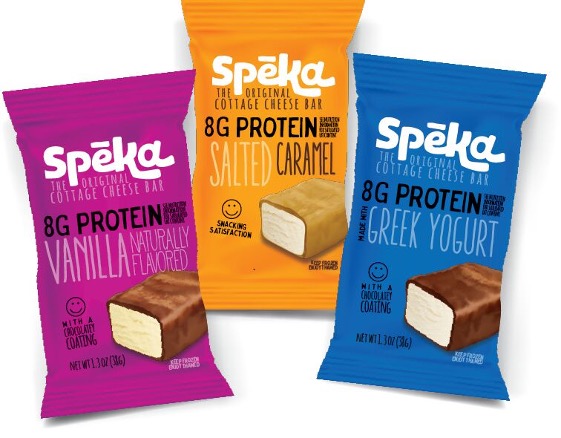
Some brands have gone a different route, choosing instead to give indulgent products a functional halo. Sweets with benefits? Yes, even these exist now thanks to Candy Can, who offer a range of delicious sweets with functional benefits (e.g., better concentration and sleep). What about functional cheese? In the US, Babybel recently launched Babybel Plus +, which are fortified with vitamins A and B12 (for improved eye health and metabolism) or with LGG probiotics (to boost immunity).
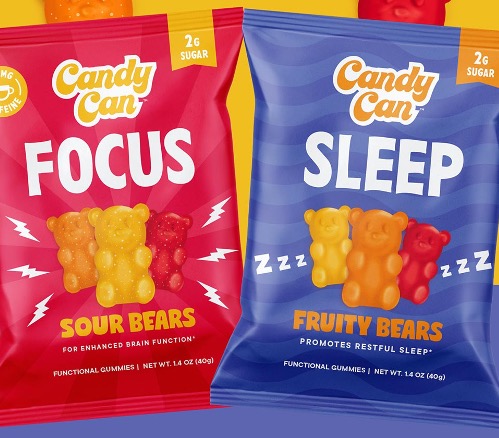
Some brands have done the very opposite, choosing to make functional products more indulgent! For example, Soov is a stomach-calming drink made with ginger and lemon juice, and includes other easy-to-digest ingredients such as chamomile, mint and pineapple. It comes in a sparkling tonic water format that feels just like drinking a soda.
A FEW TIPS FOR YOUR BRAND
Follow consumers in their daily lives
Honey to kick off the day, a chocolate bar as a snack, a hard seltzer for an aperitif, a yoghurt for afters at dinner time… Functional foods don’t just have to be for breakfast! What about focusing on a time of day or use that’s being currently ignored in your particular market?
Explore new categories
Gummies, energy drinks and yoghurts… but the list doesn’t stop there! The functional food trend is also affecting numerous other categories such as cheese, chocolate and biscuits, etc. Just think what other categories may be worth exploring…
Establish attitudinal criteria
When it comes to functional foods, purely socio-demographic criteria are not necessarily the most relevant. Have you tried targeting consumer profiles that are similar in terms of attitudes, motivations and behaviors, etc.?
Adopt a lifestyle-focused marketing discourse
Functional nutrition is gradually moving away from a purely physical health approach to a much more holistic one, which takes into consideration a new, healthier lifestyle that promotes overall wellbeing. Think about how you can shift from a scientific or medical angle, to more of a lifestyle-oriented approach.
Reinject emotion
Eating will always be first and foremost a pleasure, and a need that combines both good taste and good health. How can you recreate strong emotional benefits that do not reduce food to its mere functionality?

